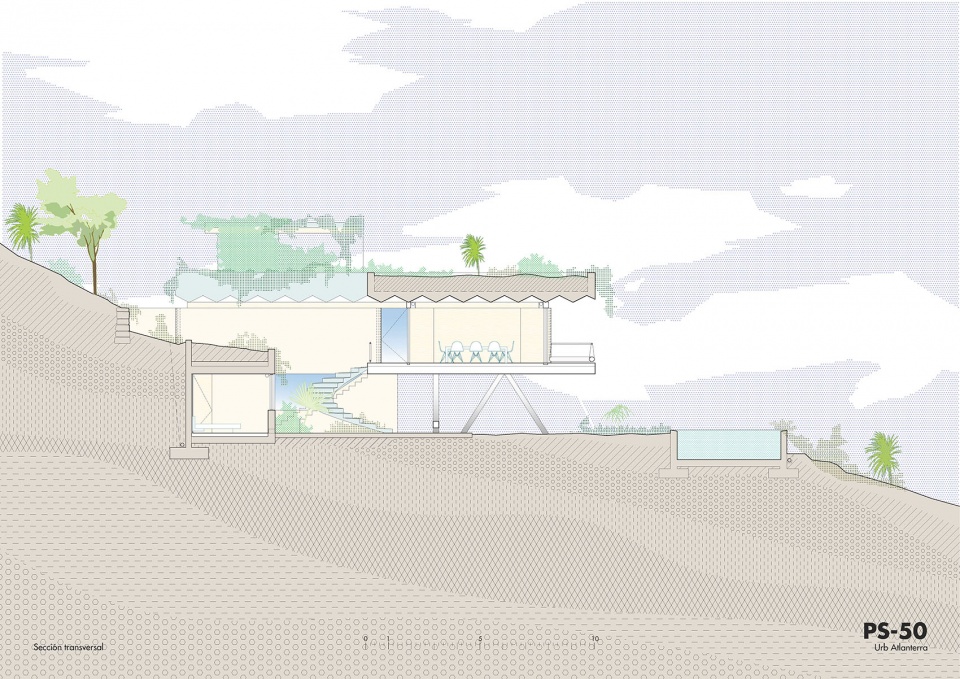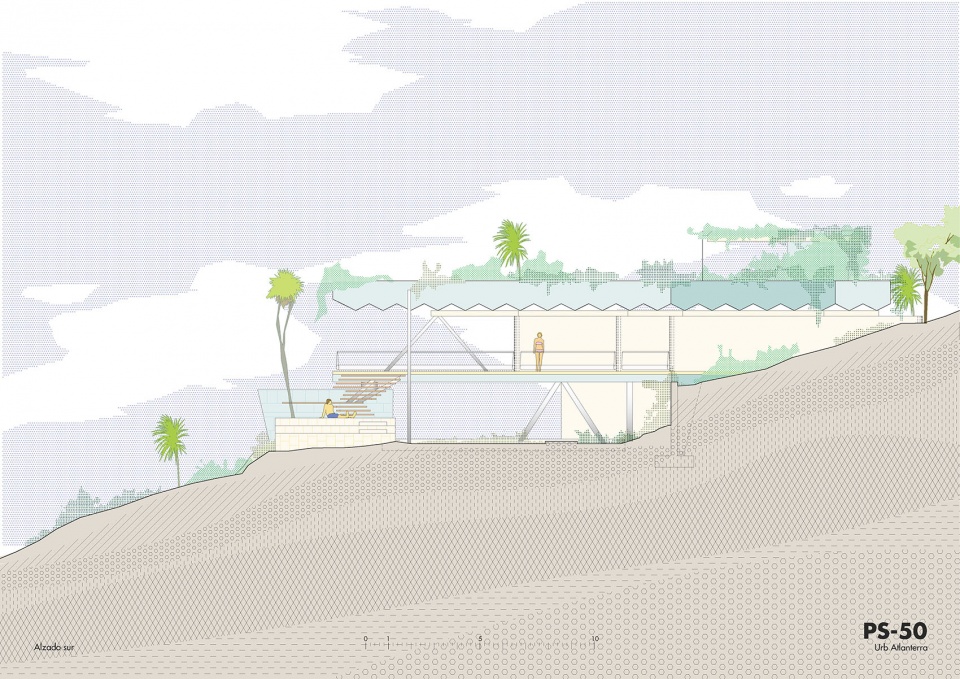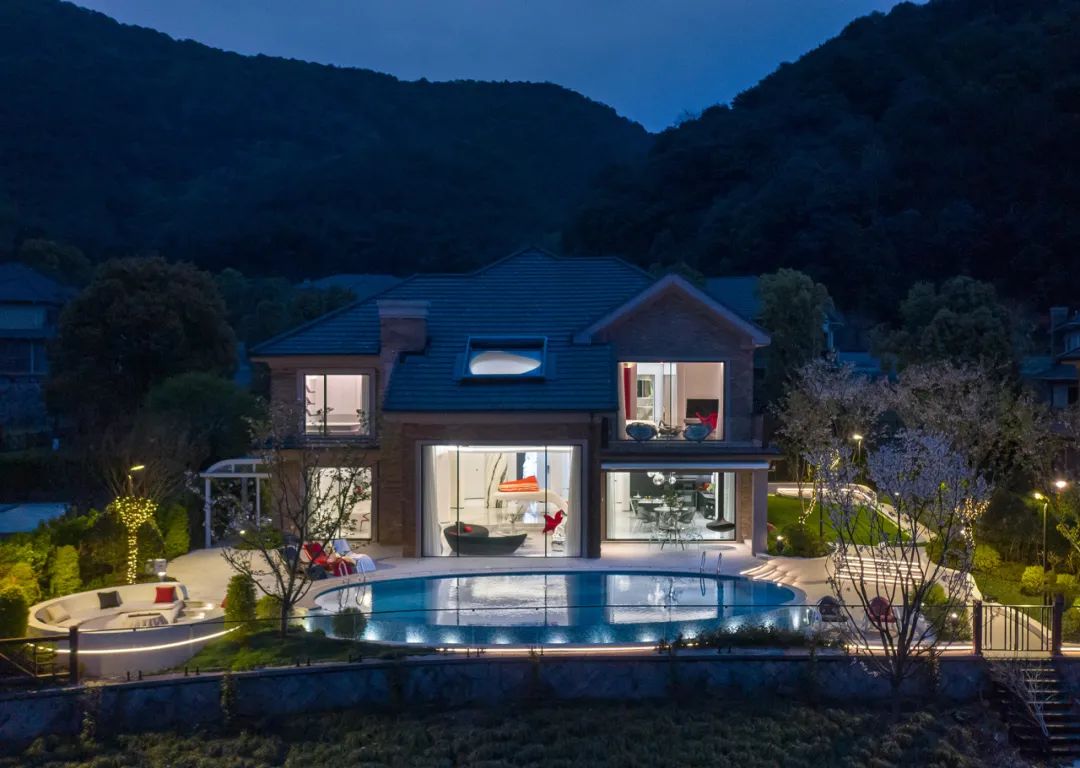

本项目的主要特点是有着非凡的滨海景观,厚实、崎岖和坚固的结构能够抵御来自大西洋风暴的侵袭。设计者设想了业主生活在一片绿植掩映中的情景,对建筑加固的目的是使体量增大而不过分引人注目,同时触发建筑体和周围事物之间意想不到的链接。
The lead character in this project is an extraordinary coastal landscape; thick, rugged, and impregnable, resisting the assaults of the Atlantic winds. We imagine the possibility of living under the cover of this greenery with the self-imposed objectives of being large and at the same time inconspicuous, while also invoking the unexpected behaviours of bodies and matters.
▼项目概览,Overall view © Luis Díaz Díaz
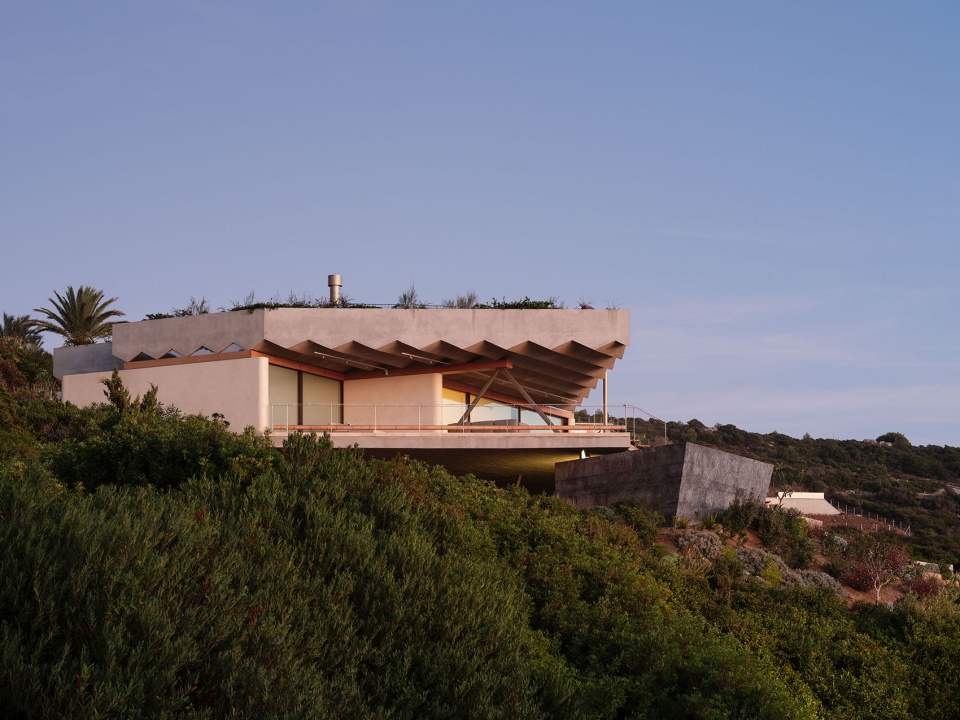
▼坐落于一片绿植中的建筑,The building in greenery © Luis Díaz Díaz
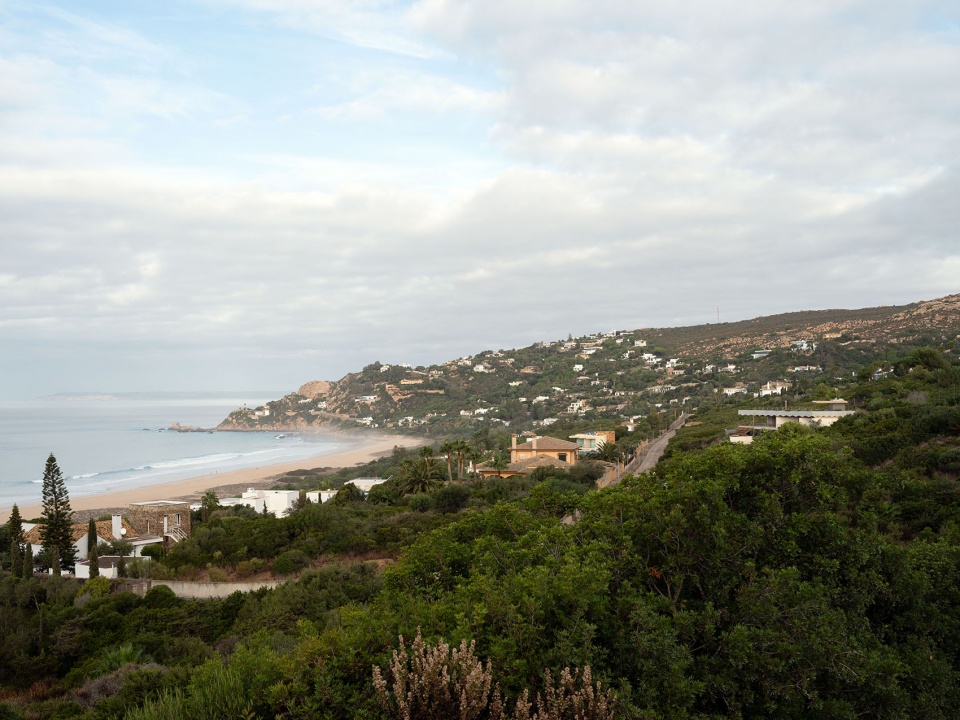
建筑的屋顶处设置了一大片空地,由混凝土板支撑着这个绿色屋顶的主要重量,这样一来能够帮助恢复地面原有的植被。屋顶锯齿状的结构使其能够覆盖较大的跨度同时减轻自身的重量,这种形状也呈现出轻盈感,就好像在风中飘扬的织物一样。
▼轴测图,axonometric © Langarita-Navarro Arquitectos
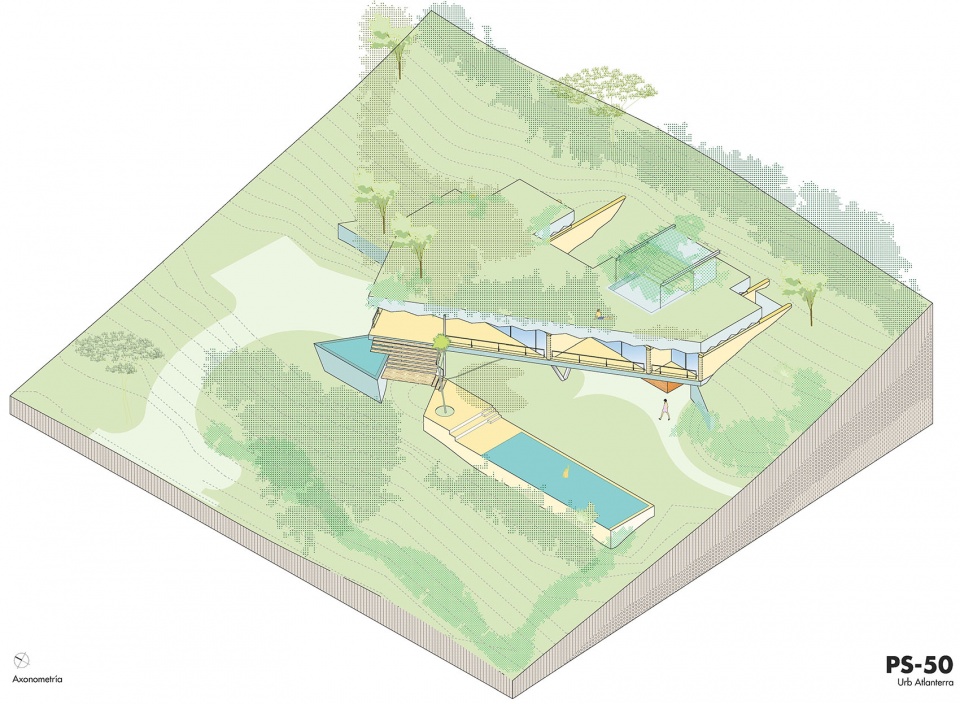
The roof takes on the shape of a large section of the terrain, elevated onto a concrete slab that supports the important weight of an intensive green roof, restoring the pre-existing vegetation. The zigzag pattern of the roof makes it possible to cover long spans and reduces its own weight, as well as conveying a sense of near-impossible lightness, almost like that of a fabric blowing in the wind.
▼锯齿状的屋顶, The zigzag pattern roof © Luis Díaz Díaz
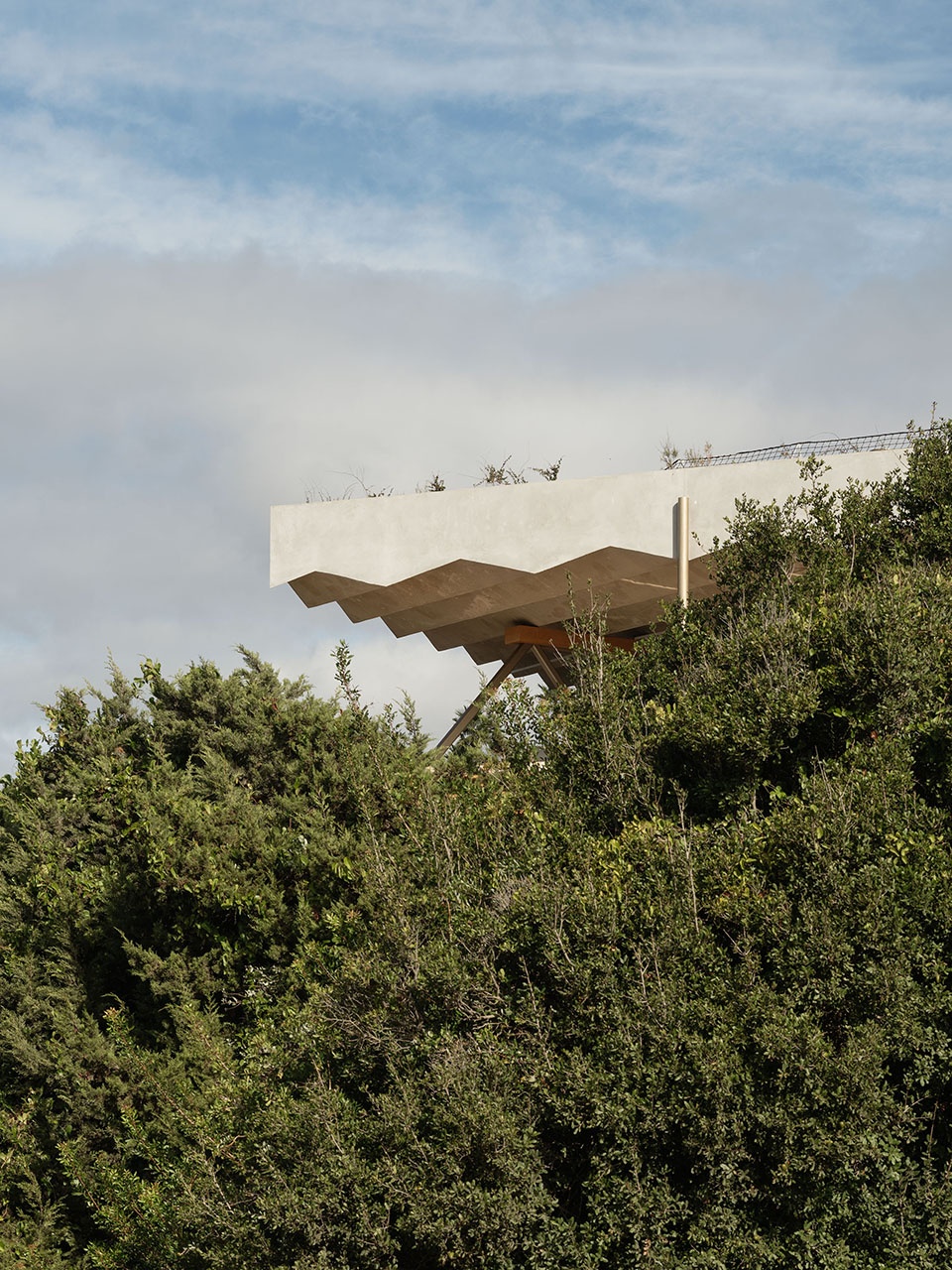
▼屋顶的绿植,Greenery on the roof © Luis Díaz Díaz
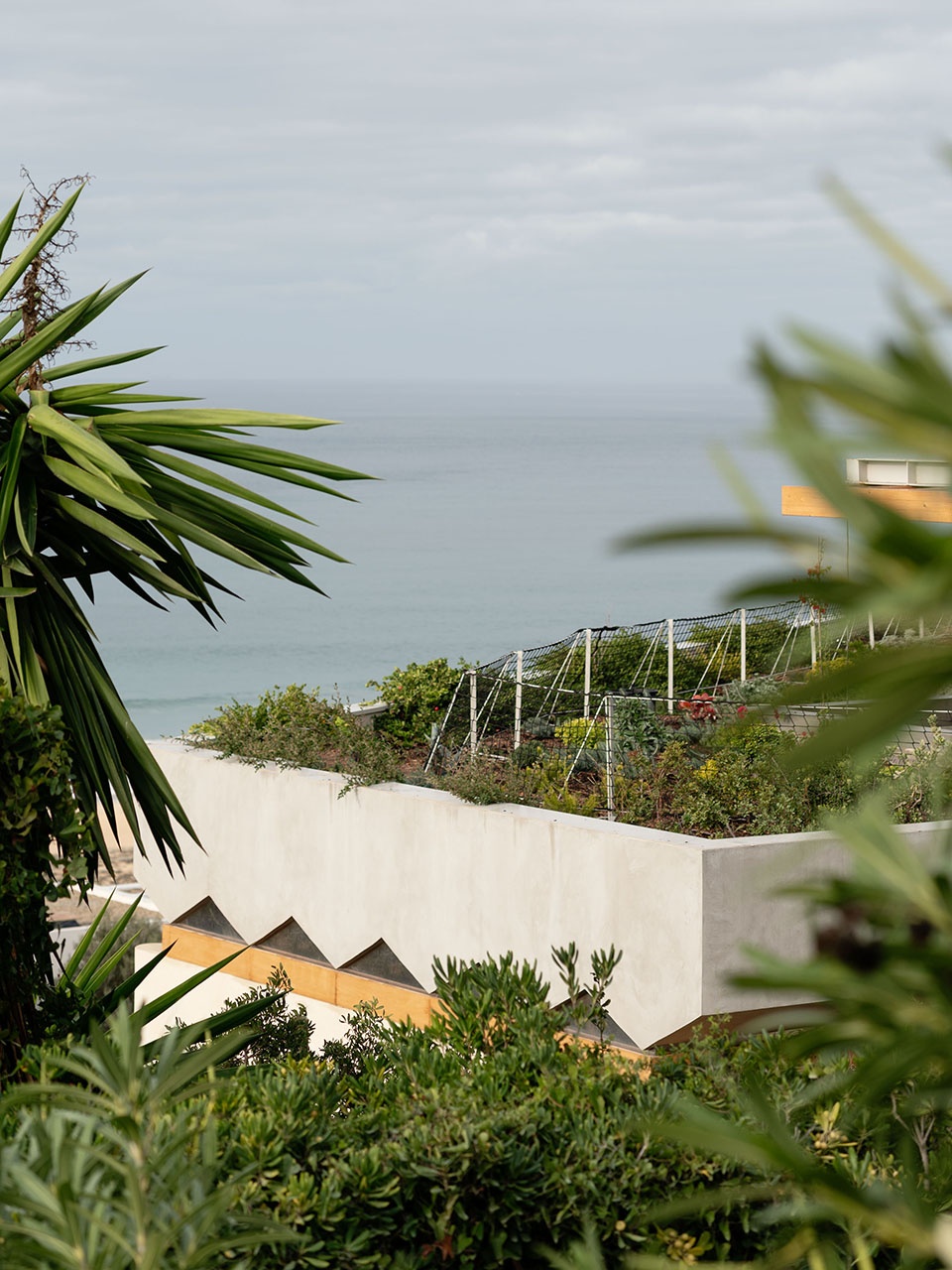
▼屋顶细部,Details of the roof © Luis Díaz Díaz
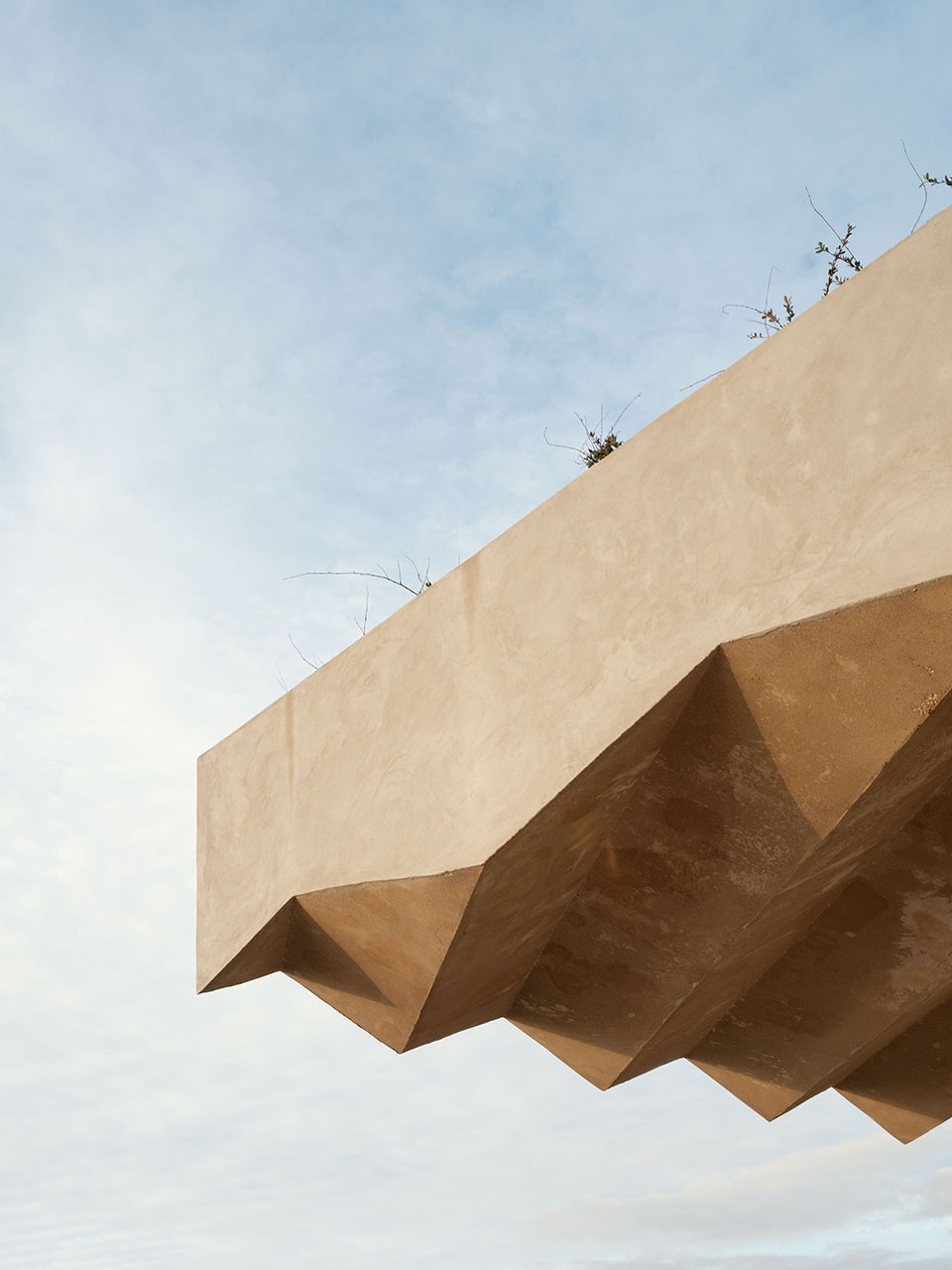
房屋的平面由一系列相互平行的墙面所围合,从下方轻轻地支撑着屋顶。这些墙壁的布置方式便于组织内部空间的用途,并灵活应对不断变化的东风和西风。业主可以根据需要打开和关闭落地的玻璃板,使空间调整为通透或闭合的状态以免受季风的影响,就像在船上使用的结构那样。
A series of parallel walls organises the house plan, lightly touching the roof from below. Their placement allows the organisation of uses, as well as managing the changing easterly and westerly winds. By opening and closing the floor-to-ceiling glass panes as needed, it is possible to deploy a configuration to expose or defend the spaces from each of the prevailing winds, using them as if one were on a boat.
▼被相互平行的墙面支撑着的屋顶,The roof supported by parallel walls © Luis Díaz Díaz
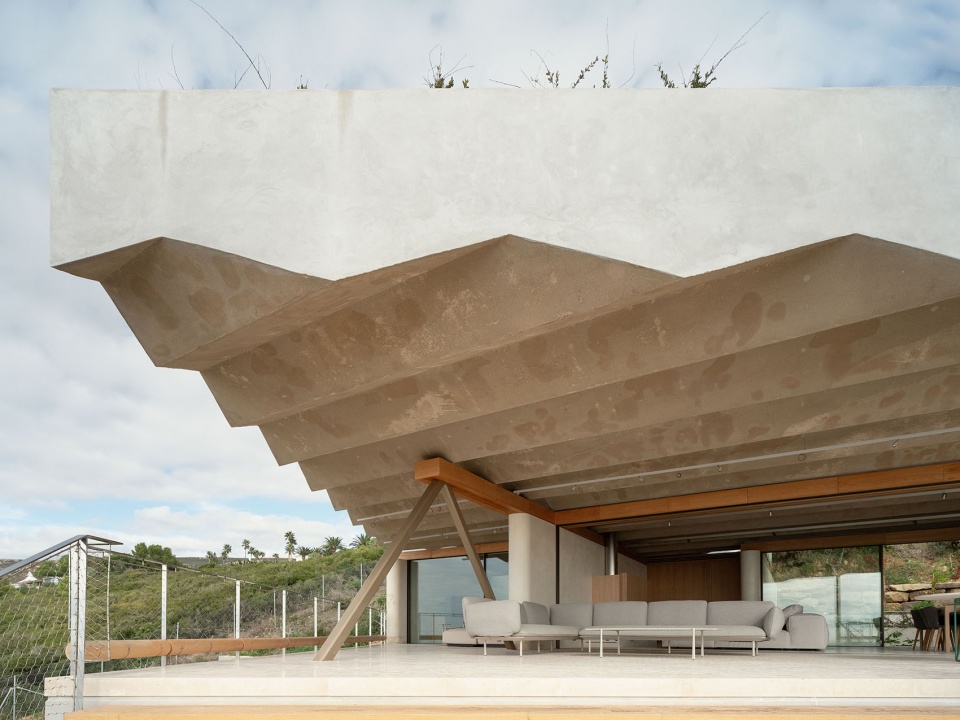
▼可灵活调整的落地玻璃板,Flexible adjustable floor-to-ceiling glass panels © Luis Díaz Díaz
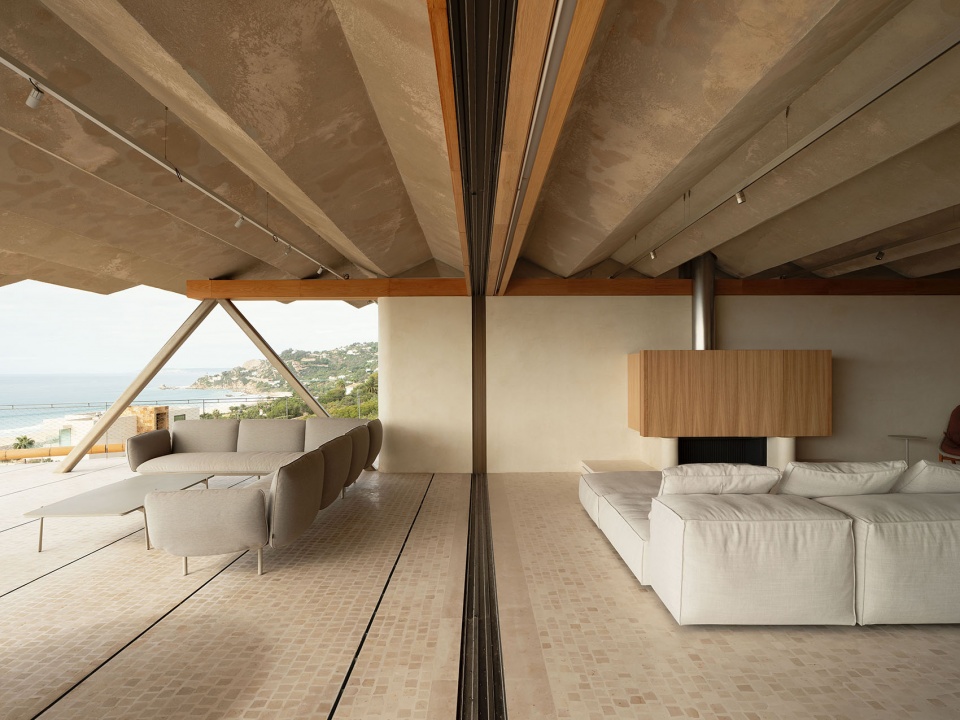
房屋的主要体量被抬升,并嵌入地形当中,就像船头一样俯瞰着大海,背靠被雕刻成棱镜状的花岗岩上,从这开始,有一连串的平台和台阶引导着通向游泳池和内部的场地。建筑的入口位于一个面朝大海的庭院,业主可以沿着宽敞的螺旋楼梯拾阶而上,建筑的周围则是郁郁葱葱的避风花园。
The main volume of the house is elevated, embedded into the terrain and overlooking the sea like the bow of a ship, leaning on a granite well carved into a prism. From here, a cascade of terraces and steps unfold outward, providing access to the swimming pool and the grounds. The access is located in a courtyard open to the sea where one goes up a generous helical staircase around a lush garden sheltered from the wind.
▼入口处的螺旋楼梯,Spiral staircase at the entrance © Luis Díaz Díaz
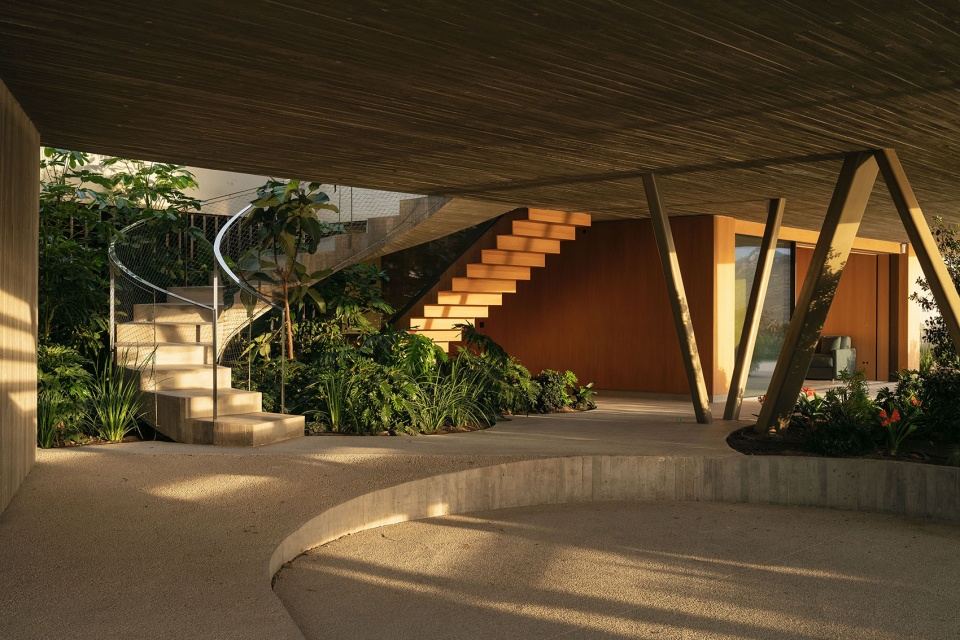
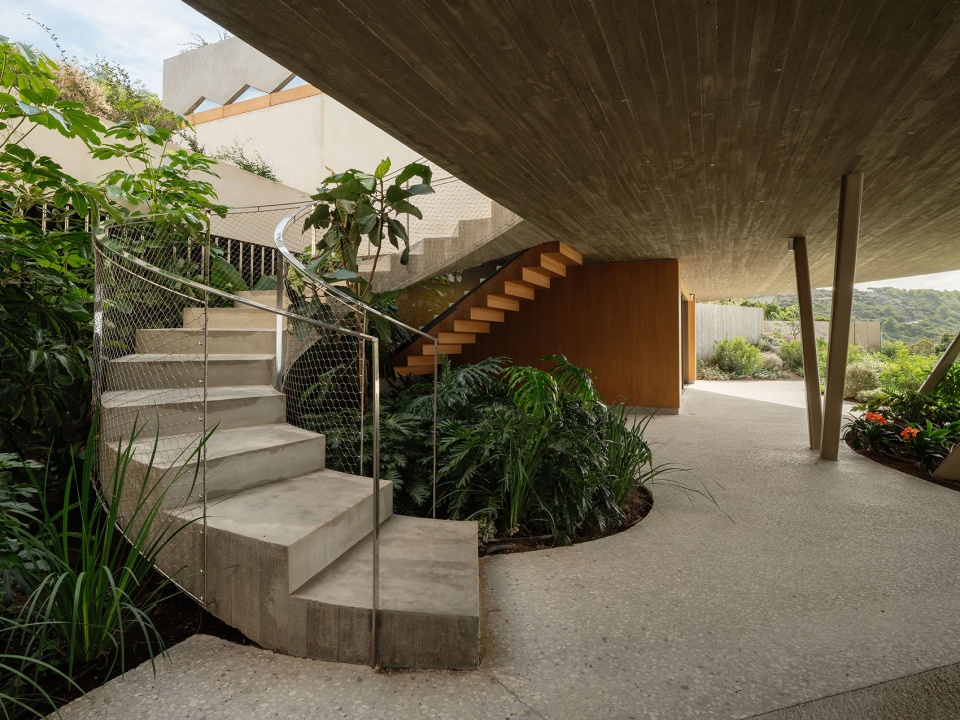
▼面朝大海的内部庭院,Interior courtyard © Luis Díaz Díaz
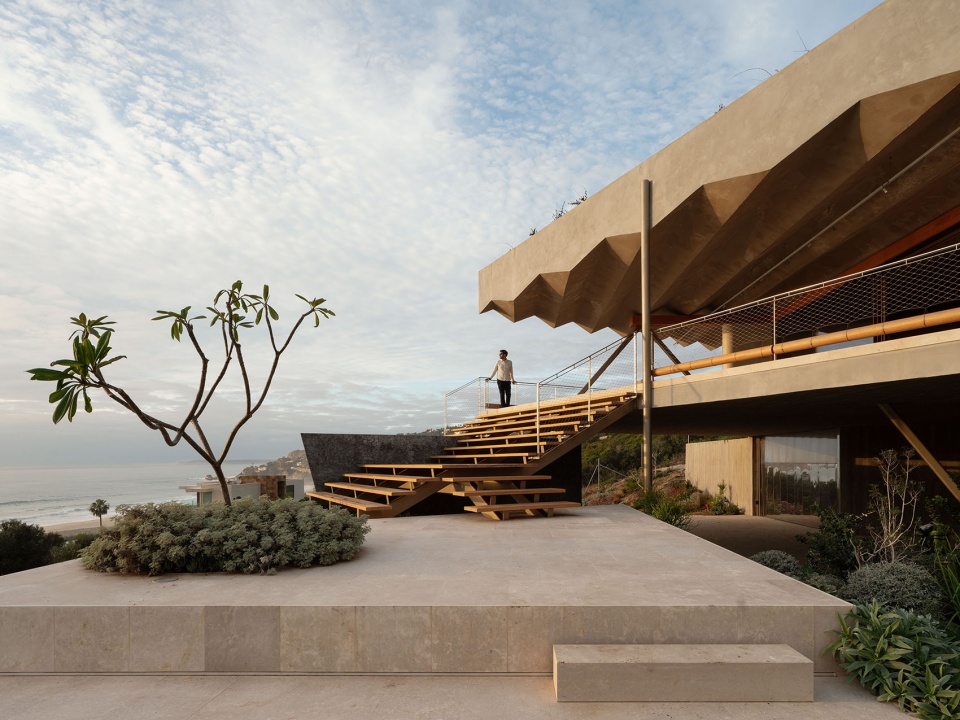
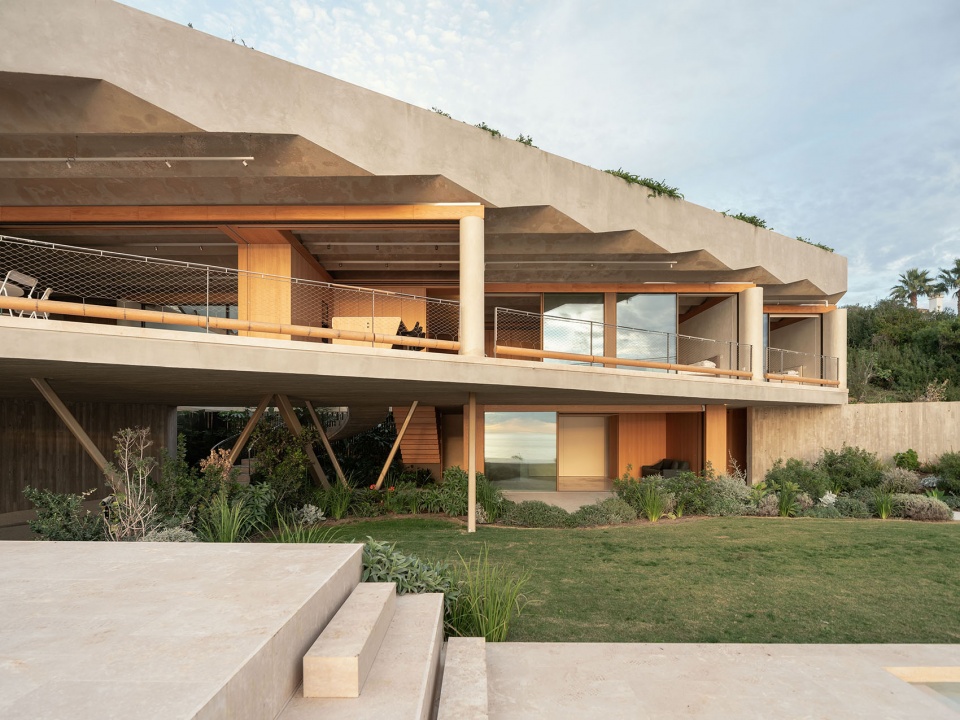
▼游泳池,Swimming pool © Luis Díaz Díaz
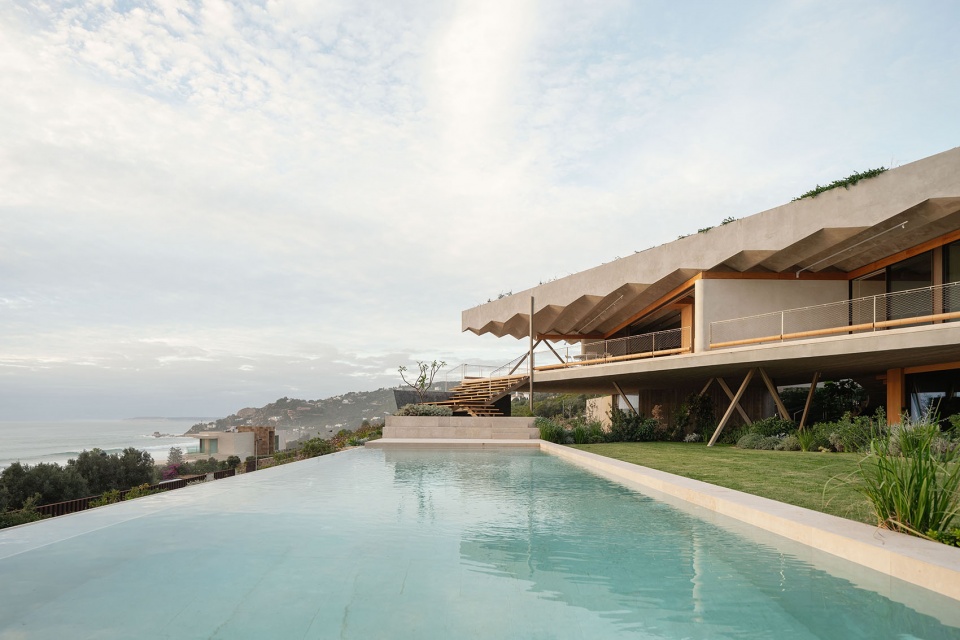
建筑使用的材料有——石灰灰泥的墙面、水平的混凝土表面、反光钢材和深色的门窗框架——这些材料的选用使房子很难从海面上被发现,因为它坐落于植被之中,模仿了周围自然环境、灌木丛和白垩岩的颜色。
Its material character – using lime stucco walls, horizontal concrete surfaces, reflective steel, and dark window and door frames – makes the house difficult to see from the sea, as it sits hunkered down among the vegetation, mimicking the colours of the natural surroundings, the shrubbery, and chalky rock.
▼从庭院看向建筑,Looking at the house from the courtyard © Luis Díaz Díaz
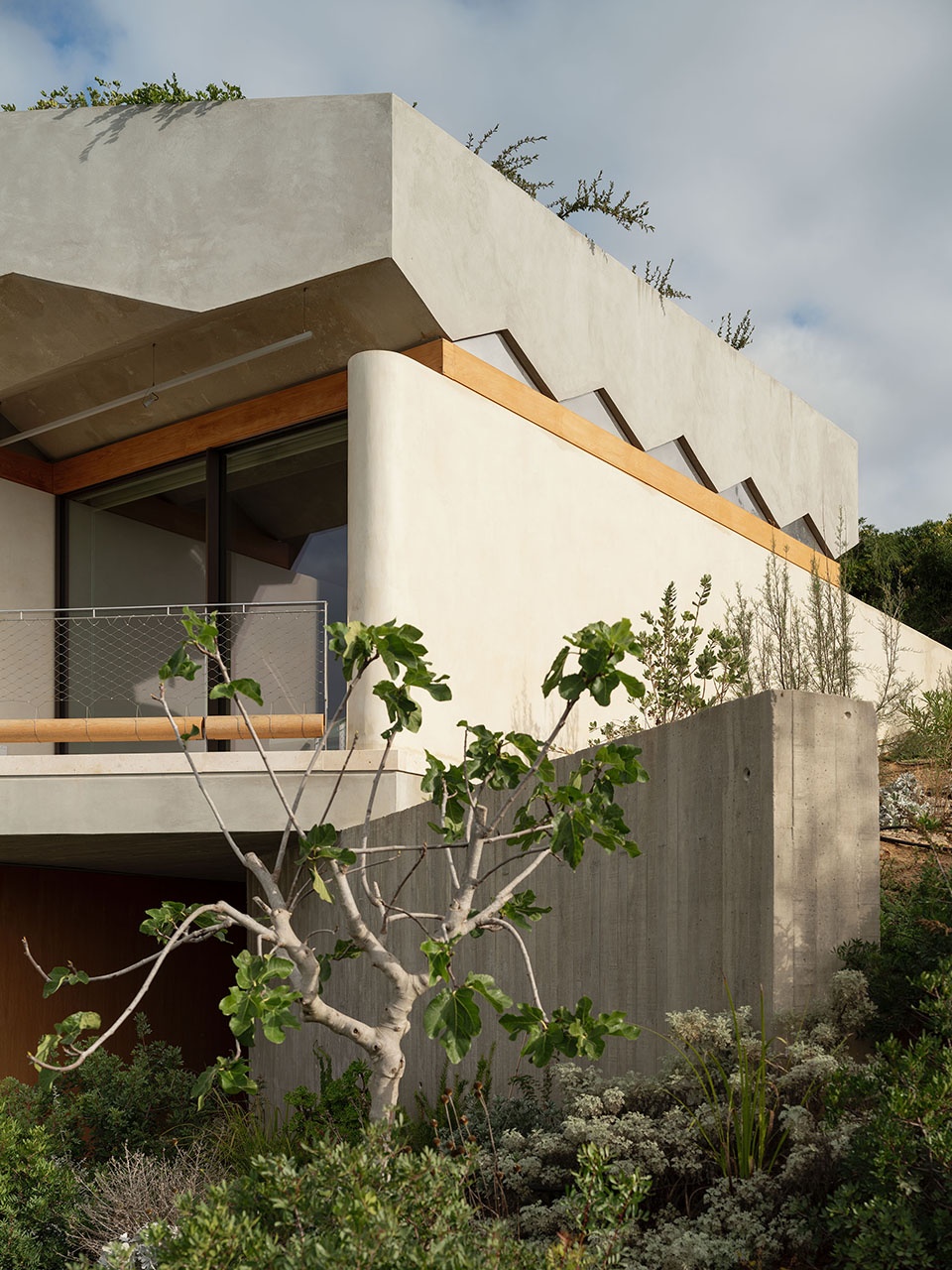
▼内部空间,Interior space © Luis Díaz Díaz
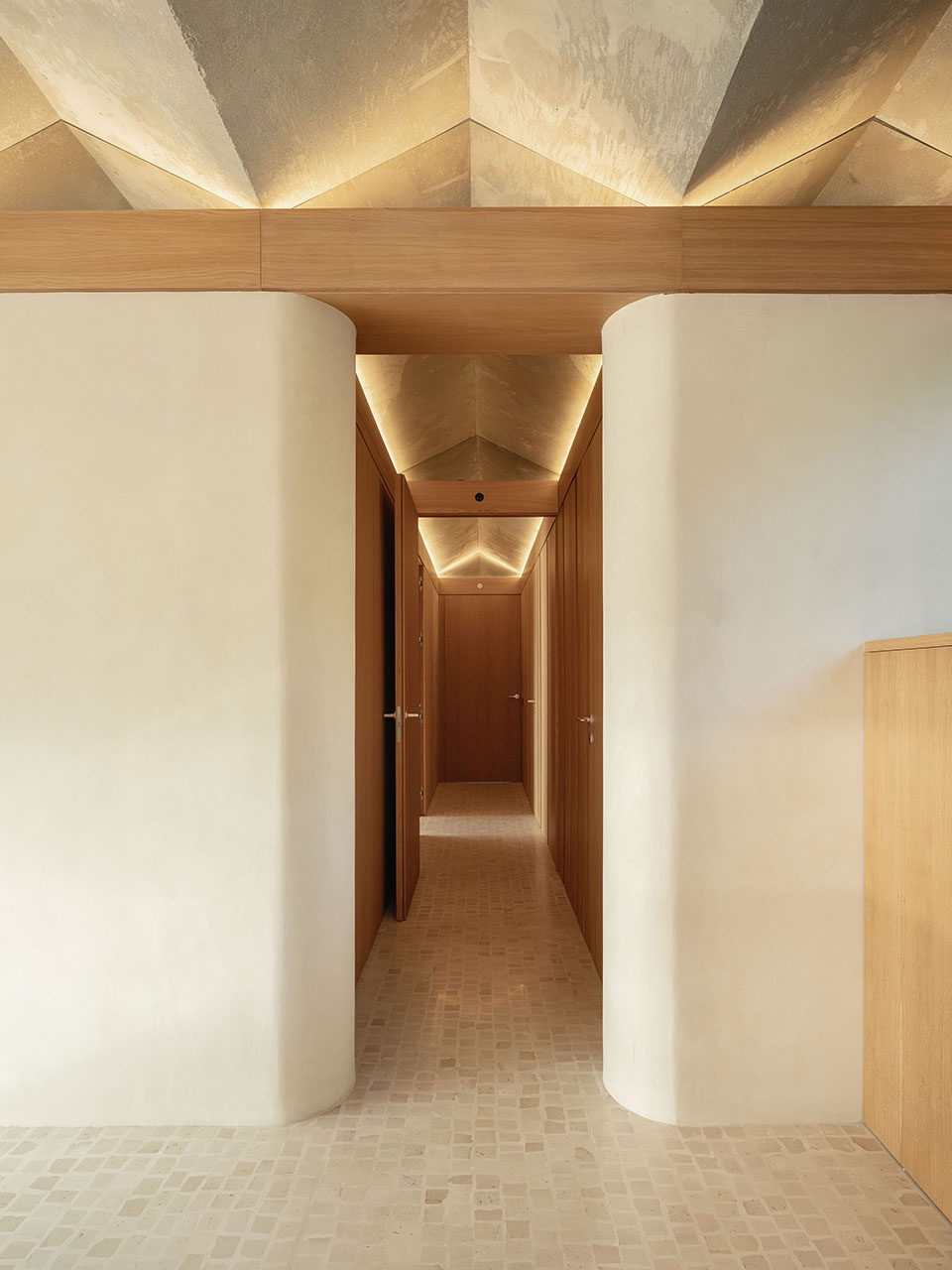
建筑周围植物分布在场地的自由空间和屋顶上,主要由需水量较低的本地植株组成,该项目的中期目标是恢复该地区施工前的景观,尽可能降低对当地环境的影响,并通过对土壤水分蒸发蒸腾损失总量的利用来减少房屋的热负荷。
The main body of vegetation is a selection of native species with low water needs across the plot’s free spaces and over the rooftop, with the medium term aim of returning the image of the landscape prior to the construction to the area, as well as reducing the thermal load of the house by making the most of evapotranspiration.
▼区位,site plan © Langarita-Navarro Arquitectos
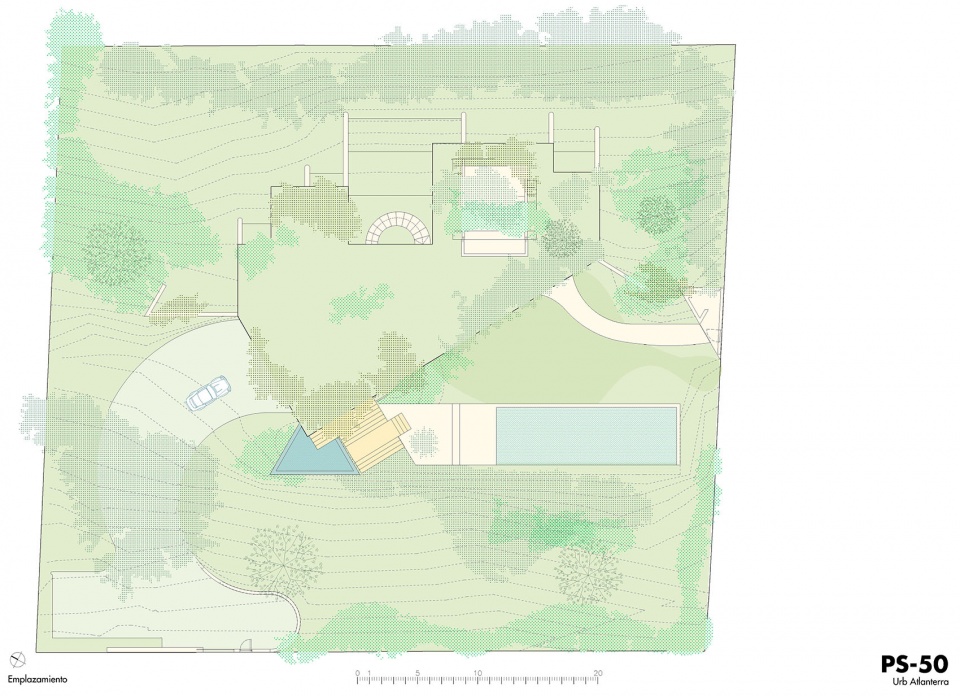
▼总平面图,plan © Langarita-Navarro Arquitectos
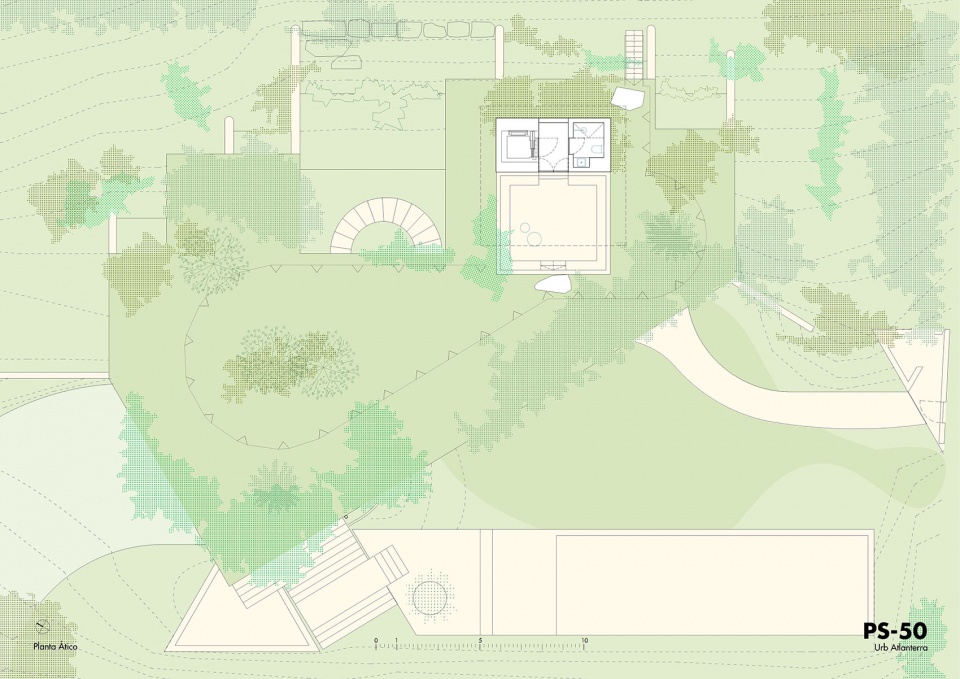
▼庭院平面图,courtyard plan © Langarita-Navarro Arquitectos
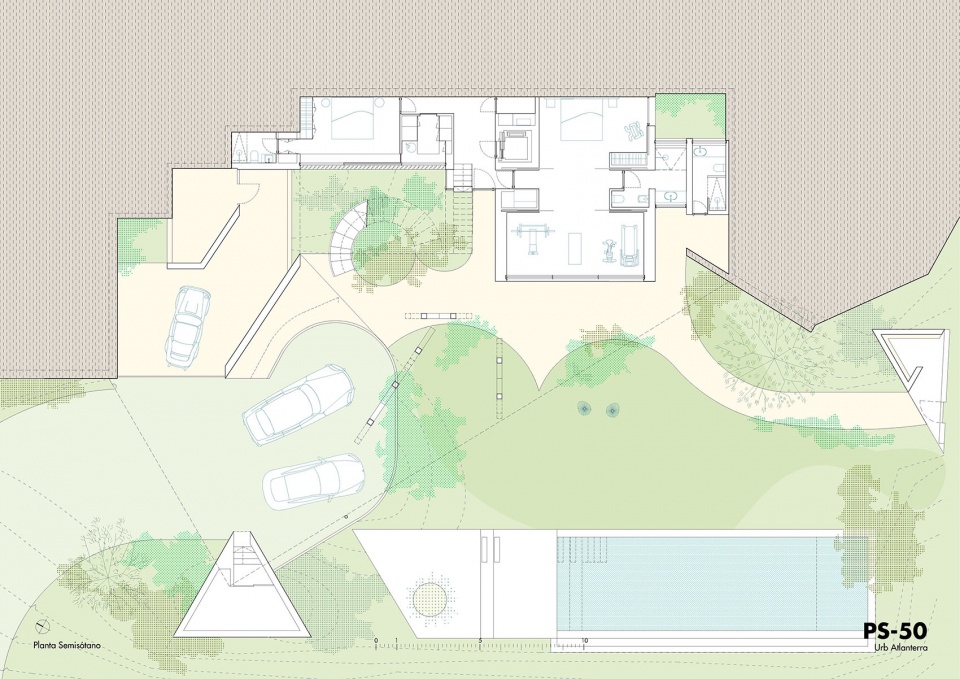
▼建筑平面图,floor plan © Langarita-Navarro Arquitectos
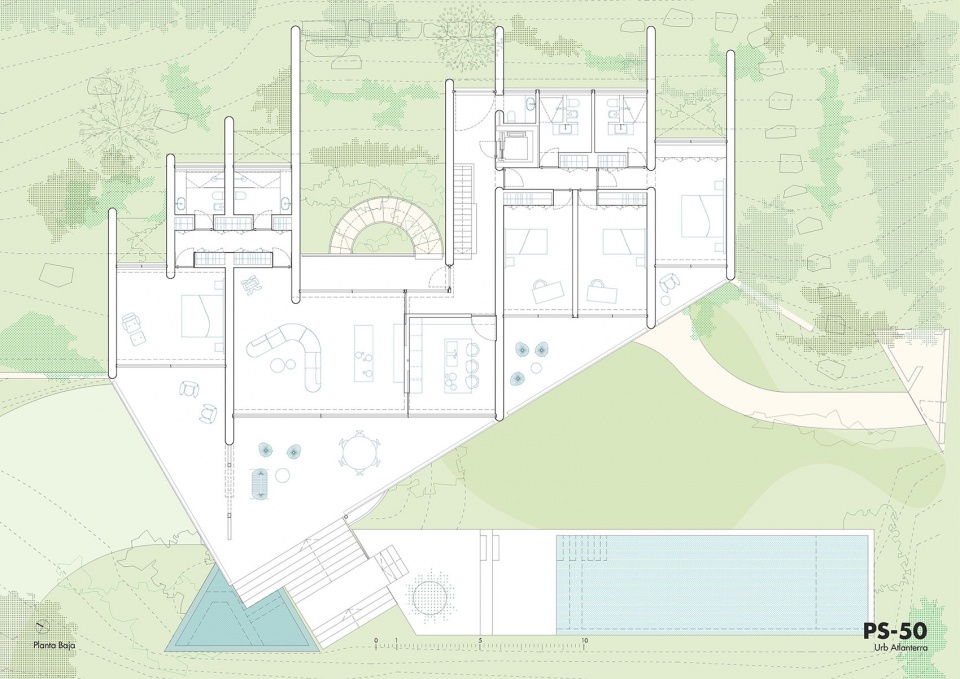
▼剖面图,section © Langarita-Navarro Arquitectos
